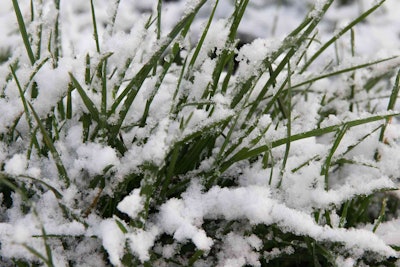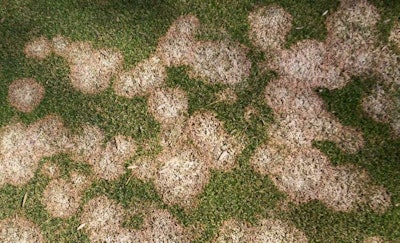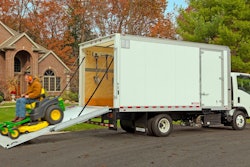 Photo: Soma Kondo/Flickr
Photo: Soma Kondo/FlickrIt is said that the best-laid plans of mice and men often go awry and this can hold true for landscaping sometimes. While you may have done your best to prepare your clients’ lawns for winter, there are some elements that are uncontrollable and some can result in a damaged yard.
Sooner or later winter will fade and leave behind some lawns looking worse for wear.
There are many different signs of a cold-damaged lawn, but here are a handful of common examples to be on the lookout for in spring.
Salt damage
One of the obvious problems with winter is the usage of salt in northern climates. Grasses subjected to high salt levels can suffer root damage and develop other disease problems. Turf near roadways, walkways and other locations snow is pushed during removal are more likely to suffer from salt injury.
Kentucky bluegrass does poorly when salt levels are higher. Joe Markell, president of Sunrise Landscape + Design in Sterling, Virginia, advises not to bother reseeding the areas with dead turfgrass.
Instead, remove a few inches of soil, and replace it with fresh soil and sod. Perennial ryegrass, tall fescue, red fescue, wheatgrass, alkali grass, and Bermuda grass are all salt-tolerant grass options to grow in areas that experience frequent salt exposure during the winter.
Snow mold
 Pink snow mold is caused by the fungus Microdochium nivale.
Pink snow mold is caused by the fungus Microdochium nivale.Photo: Todd Clift, Country Club of Ithaca
Snow molds are fungi that attack lawns under a layer of snow on the unfrozen ground and generally appear either pink or gray. Growth occurs at temperatures below freezing and can continue after the snow melts as long as the grass remains cool and wet.
The symptoms include circular, straw-colored patches that continue to enlarge if the weather is suitable. Patches can be 8 to 12 inches in diameter. Snow molds are common when early deep snow cover prevents the ground from freezing.
The damage from snow mold is seldom serious. Infected patches simply take longer to green up. Rake affected areas to promote drying and stop fungal growth. To minimize the risk of snow molds appearing, avoid excessive application of nitrogen fertilizer in the fall, continue to cut the lawn until it is longer growing, and spread out large piles of snow to encourage rapid melting.
Crown hydration
This is the most common and destructive type of abiotic winter injury and usually occurs in the late winter after periods of thawing and freezing. Annual bluegrass and perennial ryegrass are two turfgrasses that are especially susceptible to crown hydration.
In the warm weather, grasses can leave dormancy and begin taking up water, allowing the crown to become hydrated. If there is a rapid freeze after the thaw, ice forms inside the crowns of hydrated turfgrasses and either rupture cell membranes or draw moisture out of the cells, killing the plant.
There isn’t much one can do to prevent crown hydration except avoid practices that force susceptible plants into early emergence and improve drainage on sensitive sites.
Voles
Most of the time when customers see anything like tunnels on their grass they will assume that it must be moles, but the majority of the time voles are the culprit for winter damage on a lawn. They leave behind a network of crisscrossing trails that can be seen once the snow melts.
 Vole damage is easily spotted once the snow has melted away.
Vole damage is easily spotted once the snow has melted away.Photo: Gertens
Voles tend to burrow under the snow and gnaw on turfgrass. Thankfully their damage is rarely permanent. Rake away the dead grass and reseed the area to cover up the trails.
Keeping lawns trimmed and cleaning up leaves can reduce the likelihood of vole damage. When their food and cover is reduced, they are exposed to predators that feast on them.
If vole numbers are not high, trapping is effective at handling the problem. Larger vole populations require pesticides that can only be used by Certified Pesticide Applicators.










